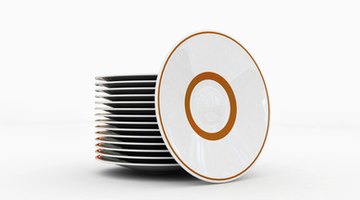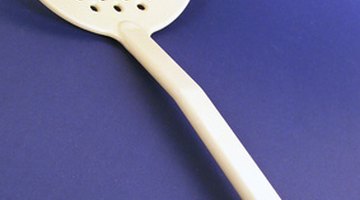What Are Plastic Plates Made Of?
Table of Contents
Chances are we've all eaten off of a plastic plate at one time or another. They come in literally hundreds of styles; from casual everyday plates to fancier ones for special occasions. Plastic is the most commonly used material on the planet.

Plastic
Plastic was not manufactured until the late 1800s. According to the site AmericanChemistry, it wasn't until the 1950s that plastics became a major industry.
Plastic is created through polymerization which is the linking of monomers (single units) to form polymers (multiple units). In other words, plastics are made up of multiple elements. There are many different kinds of plastic, some of which are used to make the plates from which we eat.
Polystyrene
Most plastic plates are made from a material called polystyrene. According to Encyclopedia Britannica, polystyrene is a polymer of styrene, which is a compound of carbon and hydrogen.
Polystyrene can be traced back to 1839 when apothecary Eduard Simon isolated an oily substance from storax, a type of natural resin. Polystyrene was further developed during the later 1800s, but it wasn't until the 1930s that it was used commercially.
Melamine

Melamine resin is another kind of plastic from which plates are made. Melamine plates are generally reusable, since the material is hard, thick and dishwasher safe. To create melamine resin, melamine is combined with formaldehyde through polymerization, according to Encyclopedia Britannica. The compound is then heated and set in a mold, or "thermoset" to create plates.
According to Time Magazine, a German chemist in the 1830s became the first person to synthesize melamine.
Dangers and Controversy
Because plastics are synthetic, or "man-made" materials, they do not easily break down and decompose. As a result, there are loads of plastic plates cluttering landfills. Another area of concern is whether plastic plates are safe for us to eat from. Melamine caused a stir in 2008 when it was found in baby formula. According to Time Magazine, this wasn't long after a brand of pet food had to be recalled due to it being contaminated with the substance.
All plastics have raised some concern because of the presence of a compound called Besphynol A, or BPA. The Washington Post reported in 2009 that while nothing is conclusive, many experts believe BPA can cause harm. BPA has been shown to break down in the heat, leaking into food, liquid or whatever it is in contact with.
It is wise not to microwave plastic plates or expose them to heat for a long period of time, since this can cause BPA to break down faster.
The Future

Plastic plates will likely continue to exist, but the types of plastic used to make them are already changing. Biodegradable plastics, or "bioplastics" are made from more natural components such as corn polymers and starches. They are currently on the expensive side when it comes to plastic plates, but if demand goes up the prices will go down.
References
Writer Bio
Brianna Gunter has been writing since 2007. She has bylines in both print and online media, including TheCelebrityCafe.com, Kiwibox.com, "The Robbinsville Advance" and "The Hamilton Post." Gunter has a B.A. in journalism and professional writing from the College of New Jersey, where she was also the editor-in-chief of the student newspaper, "The Signal."
Photo Credits
- plates image by victor zastol'skiy from Fotolia.com
- plates image by victor zastol'skiy from Fotolia.com
- plastic ladle image by timur1970 from Fotolia.com
- L1001707.jpg image by Irtas Zmuida from Fotolia.com
More Articles



